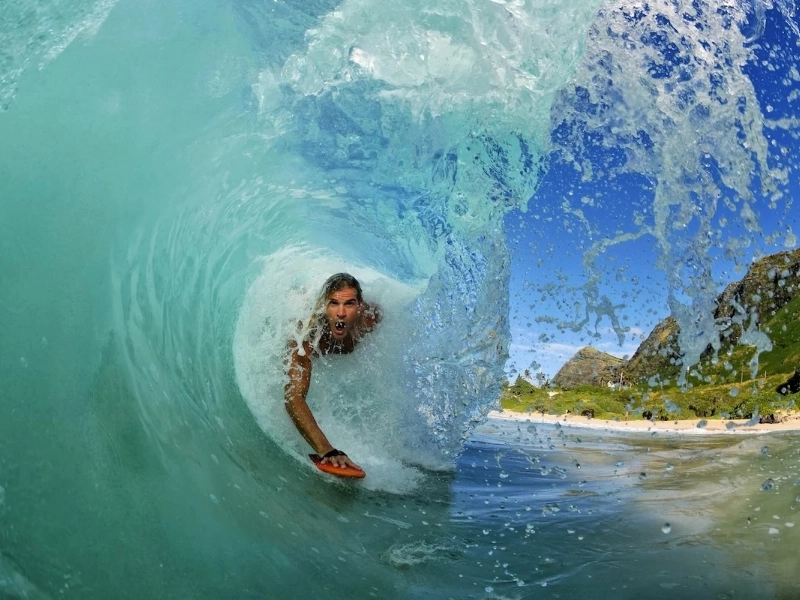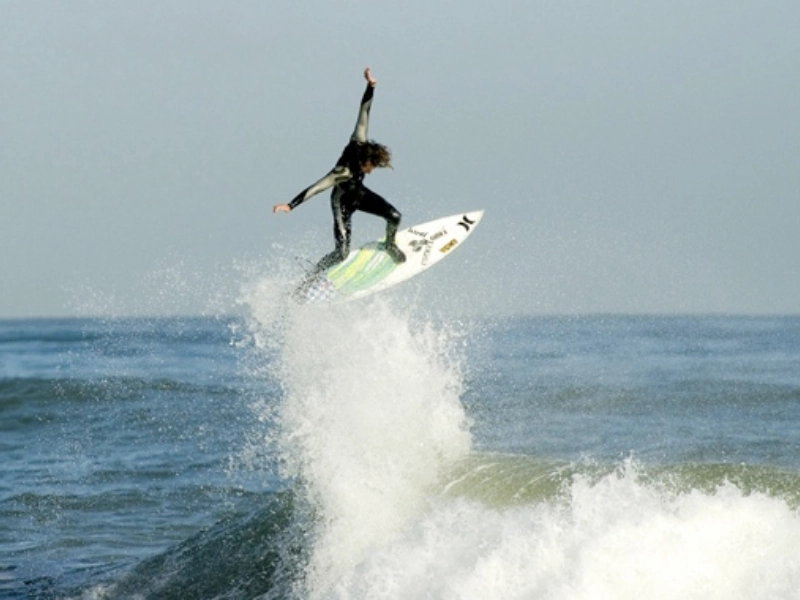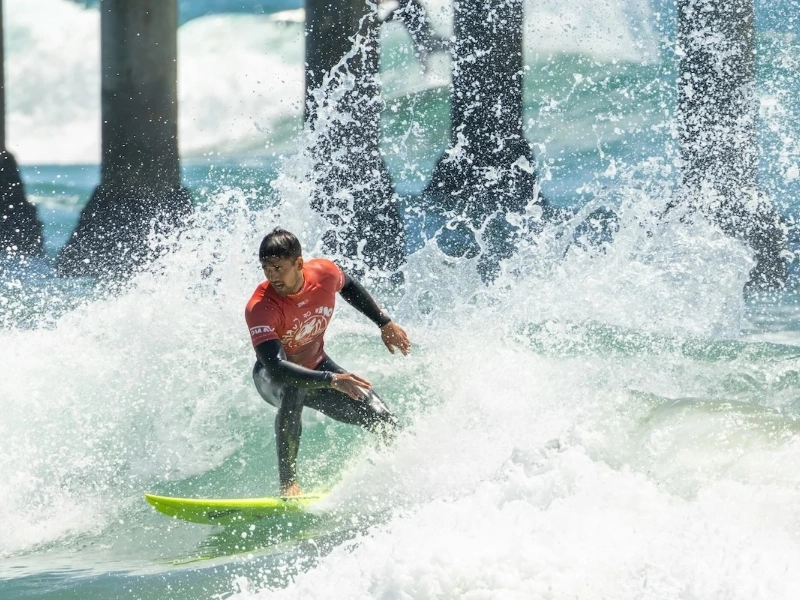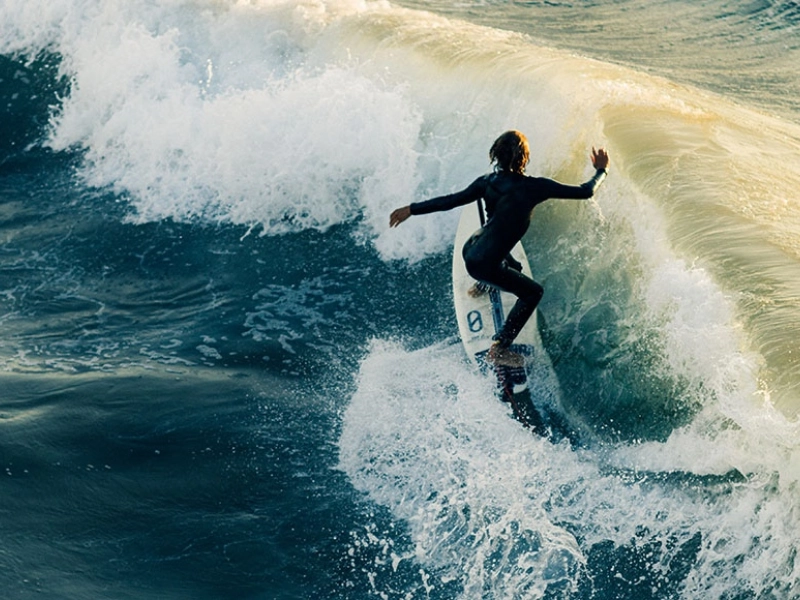MasteringSurf Photography: Capturing The Perfect Shot
Surf photography is not for the faint of heart. It necessitates knowledge of weather patterns, ocean conditions, and surfing dynamics. The use of natural light is crucial in surf photography. It may make a scene more dramatic and emotional, turning a mediocre photo into an enthralling piece of art.
1. Recognize your equipment.

2. Arrange your shots.
 Understanding your session goals is key to successful surf photography. Making a plan enables you to concentrate and predict the surfer's actions. This may lead to better timing and well-timed shots.
Surf photography also requires you to become familiar with the settings on your camera or video equipment. Gaining knowledge about ISO, shutter speed, and aperture can help you take the best possible pictures.
Producing more dynamic photos can be facilitated by mastering burst mode and panning. As a general guideline, take separate pictures of the surfer and the water to prevent them from being overly brilliant or dark. By experimenting with these methods, you may produce images that will capture the attention of your viewers. Additionally, you can give your portfolio more variation and appeal by taking photos in other areas. For instance, taking pictures of the sun setting over a rocky coastline might give it a dramatic touch.
Understanding your session goals is key to successful surf photography. Making a plan enables you to concentrate and predict the surfer's actions. This may lead to better timing and well-timed shots.
Surf photography also requires you to become familiar with the settings on your camera or video equipment. Gaining knowledge about ISO, shutter speed, and aperture can help you take the best possible pictures.
Producing more dynamic photos can be facilitated by mastering burst mode and panning. As a general guideline, take separate pictures of the surfer and the water to prevent them from being overly brilliant or dark. By experimenting with these methods, you may produce images that will capture the attention of your viewers. Additionally, you can give your portfolio more variation and appeal by taking photos in other areas. For instance, taking pictures of the sun setting over a rocky coastline might give it a dramatic touch.
3. Be prepared to follow the lead.
 A thorough awareness of surfing culture, technical proficiency, and imagination are all necessary for a successful surf shot. This method produces distinctive, eye-catching, and publishable photos that stand out from the crowd.
Capturing peak action moments is made possible by anticipating surfer actions and wave patterns. This lets you frame your photos perfectly around the surfer.
Develop exact coordination between your camera and the movements of your subject by practicing panning shots while the subject is moving. To strike a balance between maintaining the surfer's focus and producing a visually appealing motion blur of the waves or background, experiment with different shutter speeds.
Although foreground objects can give your photos more depth and texture, it's still vital to take precautions, whether shooting from land or the ocean. It's a good idea to have spare batteries and memory cards, as well as to familiarize yourself with the tides and marine species in the area. Additionally, acquiring surfing etiquette demonstrates respect for the environment and other surfers.
A thorough awareness of surfing culture, technical proficiency, and imagination are all necessary for a successful surf shot. This method produces distinctive, eye-catching, and publishable photos that stand out from the crowd.
Capturing peak action moments is made possible by anticipating surfer actions and wave patterns. This lets you frame your photos perfectly around the surfer.
Develop exact coordination between your camera and the movements of your subject by practicing panning shots while the subject is moving. To strike a balance between maintaining the surfer's focus and producing a visually appealing motion blur of the waves or background, experiment with different shutter speeds.
Although foreground objects can give your photos more depth and texture, it's still vital to take precautions, whether shooting from land or the ocean. It's a good idea to have spare batteries and memory cards, as well as to familiarize yourself with the tides and marine species in the area. Additionally, acquiring surfing etiquette demonstrates respect for the environment and other surfers.
4. Show originality.
 It takes perseverance and a willingness to try new things to take excellent surf photos. To get a range of images, experiment with different lens lengths, settings, and shooting angles. Additionally, post-processing is a useful tool for improving and adding visual interest to your photos.
A strong surf shot conveys a narrative. Capture the peace of the beach or the excitement of a surfer's move. Using inventive composition and framing techniques will help you create visually striking shots that captivate people.
It's also critical to understand proper surfing behavior. This will convey professionalism and a sense of responsibility, as well as respect for the surfers and the surfing community. This will help you gain access to surf spots and possibly work with people later on.
It takes perseverance and a willingness to try new things to take excellent surf photos. To get a range of images, experiment with different lens lengths, settings, and shooting angles. Additionally, post-processing is a useful tool for improving and adding visual interest to your photos.
A strong surf shot conveys a narrative. Capture the peace of the beach or the excitement of a surfer's move. Using inventive composition and framing techniques will help you create visually striking shots that captivate people.
It's also critical to understand proper surfing behavior. This will convey professionalism and a sense of responsibility, as well as respect for the surfers and the surfing community. This will help you gain access to surf spots and possibly work with people later on.









